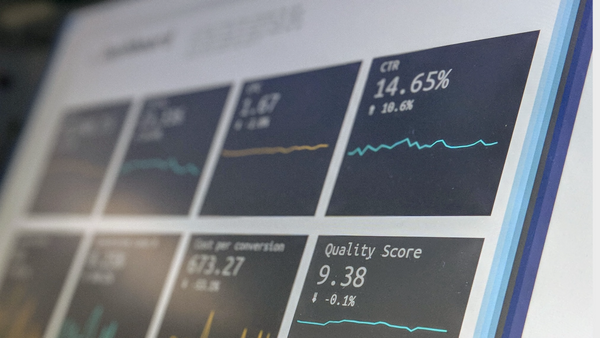11 minute read
How to Optimize Your Amazon Product Listings to Boost Sales in 2019
Being an Amazon seller and having this amazing opportunity to sell online to anyone from anywhere still takes some getting used to, since the environment is so different from conventional retail. On Amazon, you don’t get to speak to your customers face to face. There are no helpful salespeople to answer questions. Rather you have very limited space, and your listing has to speak for you.
To make sure you’re doing all you can to make your products irresistible to shoppers (and Amazon’s algorithm), you’re going to want to get good at optimizing your Amazon listing. Like your success on Amazon depends on it. Because it does.
In this post, we’ll show you how to optimize your Amazon listing to boost sales, from your product title to image and bullets. This is how you make the most of your Amazon listing to draw in more customers and rank higher in Amazon’s A9 algorithm.
Optimize Your Amazon Images to Turn Shoppers Into Buyers
Product images can be looked at as separate from the rest of the elements of your listing. This is due to the fact that images don’t contain keywords that can be indexed – as far as we know the A9 algorithm doesn’t index images. That doesn’t mean image optimization on Amazon is unimportant because it’s for your customers. It’s crucial to capture their attention and make the best impression you can. The effect of strong images will be higher sales, which means a boost in Amazon’s algorithm.
Probably the most important thing to keep in mind when it comes to optimizing Amazon images is that people have short attention spans these days. The right image alone can be enough to convince someone to hit the “buy” button when shopping online.
To make sure your Amazon images are fully optimized, ask yourself these questions:
What makes your Amazon product unique or different?
What pain does your product address?
What does your product feel like using it or owning it?
Does the product image make them wish they have it already?
You can often enhance the results you get from images with effects like overlay text. You should also make it easy for your customer to learn all the relevant details of your Amazon product with the least amount of effort. Some products need to be demonstrated and require instructions. You may need to show an image of a person using or installing the product.
Here we a see great example from a couple of product images from one of the top-selling NERF toy guns:

What makes this a great example of a product image for Amazon? The customer sees how it would feel to hold the toy in their own hands, it shows products features and the graphics are in the colors of the brand.
The graphics are extremely simple and do their job flawlessly. In fact, this one product brings in just under $75,000 a month. Also, we have to give credit to NERF for knowing their target audience – not just children want their toys. You might be a big boy who wants to play with toy guns.
Lastly, understand the importance your first image (or title image) has when it comes to optimizing your product images on Amazon. Make sure your first image is focused on showing the most persuasive selling point of the product, and show it clearly. The title image is the gateway that brings Amazon traffic to your listing, be it by organic ranking or via PPC ads.
Keep in mind your Amazon title image needs to send a clear message – even when it’s displayed as a thumbnail. Be sure shoppers see a sharp, high definition image once the listing is opened. Your image also needs to stand out from all the other titles images in Amazon search results. Check out what your image looks like on the Amazon listings page, plus do a search for your product to see how it compares against competitors in search results.
Bonus tip: Give your Amazon products the squint test, meaning there shouldn’t be a point where you would have to squint or take a second look to understand what you’re looking at or reading.
Make Every Character Count in Amazon Title Optimization
Along with your title image, the product title is the first point of contact Amazon shoppers will have with your item. Amazon gives you 200 characters including spaces for your title. Take full advantage of that space. That means zero room for fluff. Make it count. Here’s how:
Start your title with the shortest keyword that describes your product exactly. What should follow is your brand name. This obviously doesn’t really do much in terms of SEO, however, it is important to build your brand identity since it pays off in the long run.
You want your customers to know your product by brand name so that they can easily recommend it to a friend or know exactly what to search for if they want to purchase more of your products. Remember, Amazon title optimization is largely about keywords. Not entirely though.
Follow the brand name up with a few long-tailed keywords that describe your product more precisely and have a high search volume. You can get this information by using some sort of keyword research tool. You can find some free tools that give you data from Google, however, it’s best to pay for a tool that gives you information from Amazon searches.
Here’s the magic formula:
SHORT KEYWORD + BRAND NAME + LONG TAIL KEYWORDS + PRODUCT SELLING POINTS
After those long-tailed keywords, in many cases it’s smart to follow up with info about what the product is best used for. Ideally, using relevant keywords.
The very foundation of Amazon optimization is relevance, so try to use keywords to describe your product accurately.
Finally, you might see some listings use vertical lines or capital letters at the beginning of each word, which is simply for style. There’s no indexing value to doing it one way or another, it’s up to you. What you shouldn’t do is repeat keywords, not within the titles or anywhere in your listing copy. Try to vary your keywords as much as possible to be shown in more possible searches.
Don’t Overlook Optimizing Your Bullets
Bullets are often the unsung hero of winning product copy. Your bullet points communicate key points about your product in snappy style – they’re also perfect for keywords. An Amazon product listing page has room for 5 bullets in total, each with a 500 character limit.
This doesn’t mean that you should necessarily fill all of the available space. The perfect bullet finds a balance between compelling copy and relevant keywords.
Just like with Amazon image optimization, your bullets need to create a strong sales message and a cohesive narrative. Each of bullets must make its own point. Together, they must paint a whole picture about what makes your product a good purchase decision.
Due to the short attention span of many online shoppers, you’ll want to keep bullets short. On the other hand, your keywords need to flow naturally in the text.
One solution to this Amazon product conundrum is using ALL CAPS. You can simply start a bullet point with a short phrase in all caps and then after a line you can say basically the same thing in a much more roundabout way allowing you enough room to insert all the keywords you need.
The idea is that the short phrase that directly describes a product feature is more likely to be read, while the rest is less likely to be read but has keyword value. This is how to have your cake and eat it too with Amazon keyword optimization. Your customer gets the message and you get indexed on your keywords.
Here’s a good example of just that:

Needless to say, the non-caps segment of your bullets should not be unintelligible and used to simply jam in keywords. Try to mention the Amazon product keywords you’re targeting by simply writing about the product at length.
Another important rule when it comes to writing bullets, as well as Amazon listing optimization in general, is to put the more important/interesting stuff first. You naturally would want to put the most appealing quality of your product front and center, right?
So for example, you’re selling a hair dryer and you know that your 7-foot-long cord has a big advantage over other products in your niche. After doing your research, you’ve discovered that many of your competitors have gotten negative Amazon reviews about their cords being too short. In this case, you can start your first listing like this:
GET A HAIRDRYER THAT DOESN’T HOLD YOU ON A LEASH WITH OUR 7FT CORD – This long cord hair dryer with 5 attachments for styling hair gives you the best…….
Get creative. Use your bullets to be witty and warm – and make your product even more memorable! The odds are if you make someone smile while looking at your listing, you probably just got yourself a new customer.
Bonus bullet optimization tip: Use your bullets to build brand identity or to insert a value proposition. Don’t ever be afraid to dedicate an entire bullet to your brand to tell your customer what you stand for.
What’s Left Unsaid – Optimizing your Amazon Product Description
The product description is usually reserved for any additional information that didn’t fit into the listing so far. In terms of relevance in Amazon’s A9 algorithm, product description is considered the least significant in keyword indexing. It’s still significant, if only for one very important reason that’s often overlooked by Amazon sellers.
The one thing every Amazon seller should know about product descriptions? When you’re browsing Amazon on mobile, the product description comes before the bullet points. This means your Amazon product description is much more impactful on mobile. According to some general e-commerce stats, 79% of smartphone users have made a purchase online using their mobile device in the last 6 months.
This fact alone should be enough to realize that optimizing for mobile is impactful to say the least. This is why it’s wisest for your product description to have the same message as your bullets, just shorter and only squeeze in some keywords if you can.
Lastly, optimizing you Amazon product description also requires some basic coding skills – at least to make it as attractive as possible to shoppers. In order to make bullet points, paragraphs or bold letters, you need to know some basic HTML. Mostly, coding in HTML amounts to putting a few characters behind and in front of a phrase you want to format a certain way.
Use this list of basic HTML commands to format your Amazon product description:

The text in HTML might look clunky when it’s written, but it will look perfect once your copy paste it into your product description field.
Backend Amazon Keyword Optimization
The backend of your listing, or the “search terms” allows 249 characters containing keywords that describe your product. This is the only part of your listing that only you can see, and not your customers. (Well, you and Amazon’s A9 algorithm.)
In other words, you should 100% be focused on finding more keywords that describe your product well when filling out your backend. Or rather, finding keywords you believe your listing would be a viable search result for. Those might not necessarily be keywords that describe your Amazon product perfectly. It might be for a type of product that your product is similar to. For example, if you’re selling a “cast iron skillet” you might want to have the keyword “frying pan” in your backend.
You can also consider adding keywords for complementary products, possibly ones that you can see to be displayed as “frequently bought together” under your listing.
All in all, the backend of your Amazon listing has room for 249 characters including spaces. So, you have to basically list your desired keywords one after the other, only separated by spaces. As mentioned before, there’s no point in having any keyword show up twice in the entirety of the listing, the same goes here. There is however a point in having a keyword both in your listing and your PPC campaigns.
Using keywords in your backend with PPC campaigns is another way to optimize your Amazon listing. The backend is the best place to use as a keyword testing ground, since changing it cannot hurt the aesthetics or the appeal of the listing. So, if you are getting sales with a certain keyword that’s in your PPC campaign, make sure you’re indexed on that keyword to help you get higher organic rankings. In fact, combining the keywords from your listing and PPC could be one of the best ways to rank up organically and even get an Amazon’s choice badge.
Pulling It All Together to Crack the A9 Code
At first glance, your listing might not seem like a lot of space to properly present your product. However, you’ll start to see the myriad of options now that you have a solid understanding of what role each part plays. From your title to the first image to the backend, each part is uniquely important and must be used in a particular way to get maximum results.
But the best part of all with an Amazon listing is that it’s never finished. There are always new ideas to test and exciting ways to optimize your product listings. The key to cracking the A9 code, and growing Amazon sales, is coming up with new strategies and testing them out.










